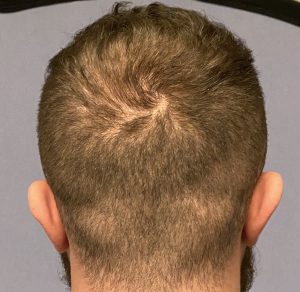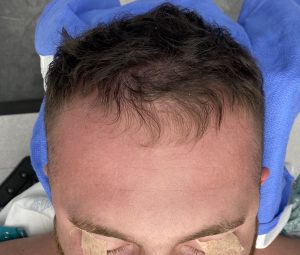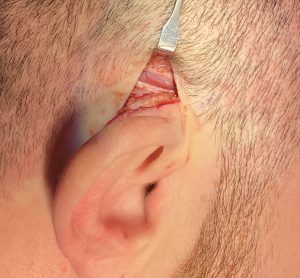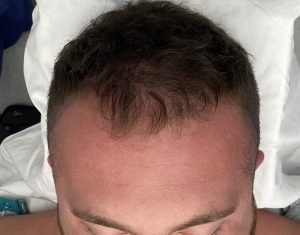Background: Temporal reduction remains the only known effective procedure for a reshaping/narrowing of the side of the head. This is particularly useful, almost always in the male patient, in which the side of their head has too much convexity and they desire a more straight line appearance to it. Since the side of the head is the only part of the skull that has a significant muscle layer removal of a portion of it will produce an immediate and lasting change to its shape.
The temporal muscle has a distinct distribution of its muscle fibers/mass which can clearly be seen on a skeletal model. The side of the head has two distinct bony shapes, a deep concave section by the side of the eye and a convex bone shape above the ear. These skull shapes control the thickness of the muscle with the greatest volume in the concave part of the temporal bone and less volume but with a larger surface area over the convex part of the temporal bone. As a result I make an aesthetic distinction between the anterior and posterior regions of the side of the head which correlate to the shape of the skull underneath it.
Anatomically the temporal muscle plays the major influence of the shape of the side of the head from the forehead anteriorly all the way to the back of the head. This is a frequent under appreciation of the significance of this effect from patients and surgeons alike. As most patients are aesthetically concerned about their head width over the convex shape of the bone this serves as the basis for the removal of the posterior, and actually thinner, part of the muscle.





Case Highlights:
1) The angulation of the muscle affects how far forward the effect of temporal reduction surgery is.
2) From a point of access at the top of the ears, the angle of the muscle cut can be controlled.
3) The key to avoiding a visible muscle step off is the dampening effect of fascial closure and atrophy of the muscle edges.
Dr. Barry Eppley
World Renowned Plastic Surgeon




